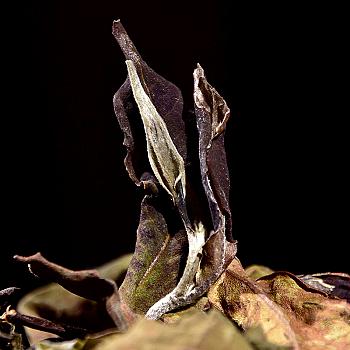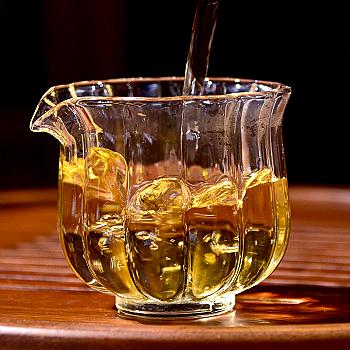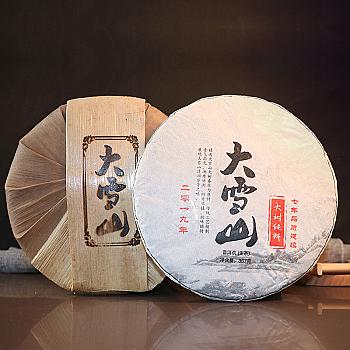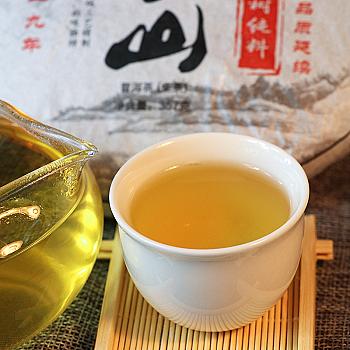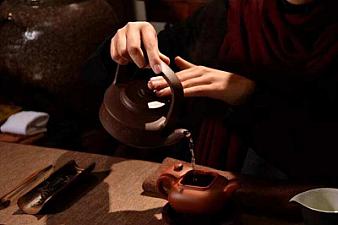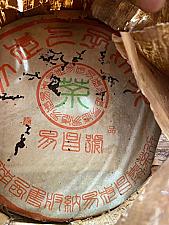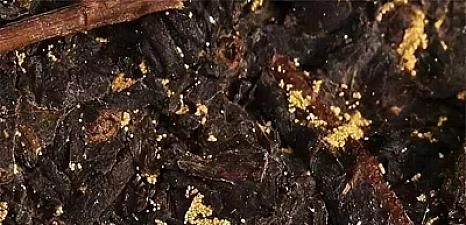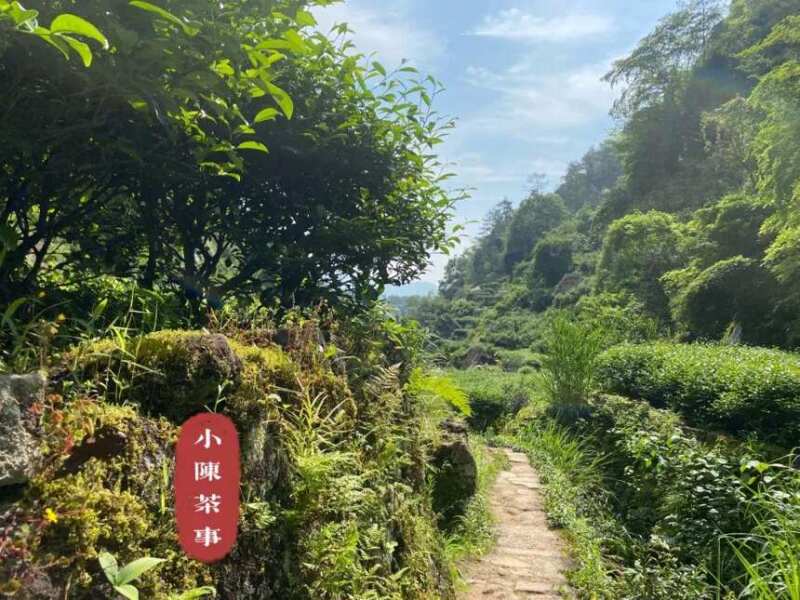
Chrysanthemum and jasmine are too fragrant to be able to reveal the original taste of rock tea?
August 14, 2025
Last month I predicted that Houjicha's (roasted tea) position as the "one and only" roasted tea might soon be a thing of the past. But some regular readers have told me otherwise - none of the other hojicha types can take its place.

Chapter 1
Its position as a "one-horse wonder" may soon become history.
But there are also some feedback from such old tea customers.
No variety of Japanese tea can replace the place of Lily and ginger.
The analysis reasons that Ryokucha's varieties are too scented in general and cannot express a strong yuzu taste.
Ah, again and again another connoisseur of aged tea who has become arrogant because his tea is so fine.
It's really unfair!
In professional evaluation, aroma accounted for a proportion not lower than total scores, and basically about 30% or so.
Judges will not arbitrarily delete a tea just because it is too fragrant.
The fragrance is not a mistake for Japanese tea.
Rock tea has fragrance, with these 8 clear indicators: good rock tea is a bottom line, indispensable.

Volume 2
What's Tea is it about taste or aroma?
Many tea fans talk about Japanese tea and emphasize a single character for it.
A very classic Chinese saying about tea tasting.
"Flavorful dishes are ubiquitous everywhere, and a gourmand like us wants to taste every kind of flavor."
A few words and the scent is set against the stone's resonance.
As if one is extinguished and the other takes its place.
Delicious tea can't capture the rocky sound.
The aroma of rock tea is strong but less fragrant than oolong.
But that's not true!
It's all about the "韵" (rhythm) when it comes to drinking rock tea, and indeed it sounds more sophisticated.
But let's not forget this premise either.
The taste of tea cannot be separated from the fragrance and flavor of tea.

Ryokucha is a type of Japanese green tea known for its light flavor and delicate aroma, which is particularly refreshing in hot summer weather.
The aroma of Zhengyan Tea is mostly quiet and stable, tea fragrance sinks into water, fragrant falling to the water, fragrance contained in the water.
To sip tea is a pleasure of both aroma and smoothness at the entrance.
As the tea soup is flowing down the throat, and between the savoring, the threads of fragrance drift back and forth between mouth and throat.
Like Zengyanshao old clusters, top-grade valleys cinnamon and so on, after drinking a few cups of tea, can savor for long.
Long-lasting fresh breath, long-lasting sweetness in the mouth, long-lasting cooling sensation! The residual flavor inside the oral cavity also lasts a long time.
Lastly, this point can be seen as rock tea's "scent and rhythm".
Although the word "xiāngyùn" (fragrance) sounds refined and elegant, it is rarely mentioned in everyday conversation when people are sipping tea.
But put in a different way, tea lovers won't be unfamiliar with it - the fragrance feature of Zhengyan Tea.
The soul uses a physical body as its vehicle.
Rocky Music carries scents and flavors.
Lost its vessel, where should the soul of good tea be put?

Three (3)
Two, is it inferior compared to the high-end varieties of Saussurea lappa?
Years ago there was a hot debate in tea circles.
The Tea Snob Hierarchy.
Where there are people, there is also a world of power and influence. The snobbish hierarchy on tea tables has never disappeared.
Within the Japanese tea world, small-scale teas have been at the bottom of the social hierarchy for a very long time.
Sharing your favorite types of tea such as Golden Jasmine, Orchid Oolong or Yellow Tea at a traditional Chinese teahouse setting.
Easily bringing on condescension, being said to not understand tea.
Many lukewarm tea drinkers will choose to drink small varieties of tea in order to show off their supposed expertise.
In the eyes of these tea guests, drinking a low-grade tea is shameful, only drinking cinnamon and old Qingsheng can bring face and demonstrate one's understanding of Japanese green tea.
I was drinking tea outside last year and someone said that he only drank Suan Mei and Water Lily, but any other kind of tea would have a bad taste as soon as it touched his lips.

After all that's been said, they decided to give him a test.
Found a rare type of Yixing teapot called "Fu Rui Xiang" and brewed some tea for him.
That osmanthus fragrance has a few types that resemble peach-like scents and its tea-like depth is not inferior.
Before handing him that cup of tea with lemongrass essence, I gave a hint by saying its fragrance was quite nice.
As expected, he immediately guessed it was Guaixiang Rougui and said that this Rougui from the Ma Tou Shan area is the real deal, worth 3,000 yuan per catty.
Later on he found out it was Sweet Woodruff, nearly made him go blind.
At its core, oversimplification because of tea names leads to a lack of respect for varieties of tea.
In the end, I don't know how many good teas I will miss out on.
Still, it's worth saying that different types of rock tea are diverse and complex, with many individual characteristics.
The difference between them is just a matter of breed characteristics, and cannot be distinguished as high or low quality!

Volume 4 (1990)
Are smaller tea varieties too hard to get the rock taste?
In reality, whether there is a rock's tone or not depends on the mountain scenery.
Mountainous locations are advantageous, and weathering debris nourishes richly.
Under natural superior conditions, it is impossible for the rocky tea to not have the tone of rocks.
Regardless of whether it is ginger water or any other variety of tea.
Here is the translation: A classic example of this is Goddess Guanyin 105.
The characteristic of this variety is its fragrance!
Through-heaven fragrance, fragrance through heaven.
As a cultivar variety, both its mother and father stock have made contributions in terms of aroma.
As a descendant of Yellow Buds (also known as Golden Osmanthus) and Iron Goddess of Mercy tea trees, its fragrance is particularly strong and distinctive.

But many tea guests had a general impression of Huang Guanyin.
The most straightforward phrase I've heard is: "This kind of flavored tea can be sold for 1,000 yuan a catty and it's okay."
That's still not right, it depends on the mountain and the craftsmanship.
There are many Amazons on the market, but mostly they're just made for show, with some nice figures and maybe some nice accessories.
Loose-leaf yellow Tieguanyin made from soil not containing typical weathered rock fragments lacks the depth of flavor and the aroma, although high in fragrance, is somewhat coarse rather than delicate and elegant.
But when it comes to the real rock statue of Bodhisattva Guanyin, things are quite different.
The soup is thicker and more viscous, with a fresher tea fragrance that's even more delicate. The fallen water flowers have become storager and richer in scent. Even the fragrance of the flowers has changed from bold to fresh and elegant.
Anyone who has had a chance to try Tieguanyin or Tieguanyin varieties can easily see the truth.

Chapter 5
Small-breed tea, no cultural heritage?
Inside the Gyokuro circle, minor varieties of tea are looked down upon.
In addition to being criticized for its too strong fragrance, failing to embody rock flavor and lacking the spirit of tea.
They even started playing on the cultural aspect.
After some polishing, the core of that argument is really just that miniature breeds have no historical background, were entirely bred by humans and lack cultural significance.
To be honest, such bias is quite meaningless.

For thirty years, the east of the river is where things happen; for thirty years, the west of the river is where things happen. The wind and water change with each passing day.
Thirty years ago, today's cinnamon sticks had a cold reception too.
Wuyi Mountains has a local tea history for over 1,000 years. Even the ancestors of Wuyi tea, Water Chestnut (, Shui Xian), Cinnamon Bark (rou gou), and Big Red Robe (Da Hong Pao) did not even appear in history.
Right now talking about cultural heritage is nothing but a way of discriminating against small tea varieties, which is undoubtedly too naive.
Each his own time.
Let everything go and time will solve everything!

Volume 6 (Japanese: Volume 6) is the sixth and final manga volume of the Japanese light novel adaptation of the anime series.
Existence is rational.
Even in a vast world, everything as small as grass has its own value.
And how about the small varieties in Yunnan tea?
Compared to species like water lilies and cinnamon, minor species have a lot of significance.

They complement the shortcomings of high-grade rock tea, making the taste of rock tea more varied and colorful.
With many new varieties giving early harvests, it's easier to stagger tea production;
Special features such as fragrance of flowers and fruits are inherent in small varieties, expanding possibilities of rock tea aroma;
In terms of blending, small-batch tea also has an advantage.
For tea farmers, planting low-yielding cultivars means being able to defend themselves against market fluctuations.
Furthermore, with independent varieties appearing, guests can feel the charm of rock tea's variety.
Taking a step back, we can also return to the original ingredients of Big Red Cloth, and it will not be wasted.
